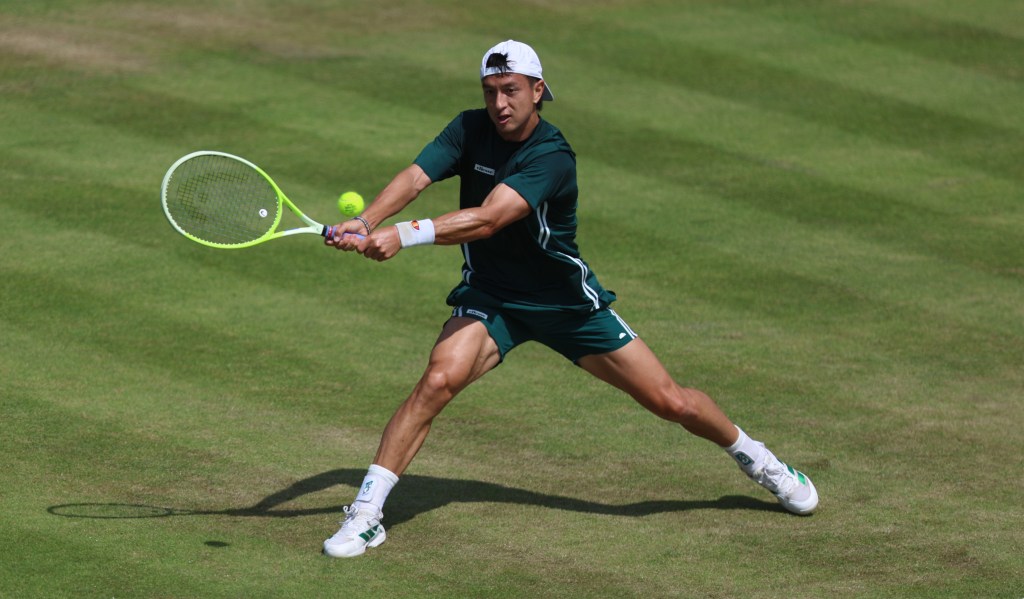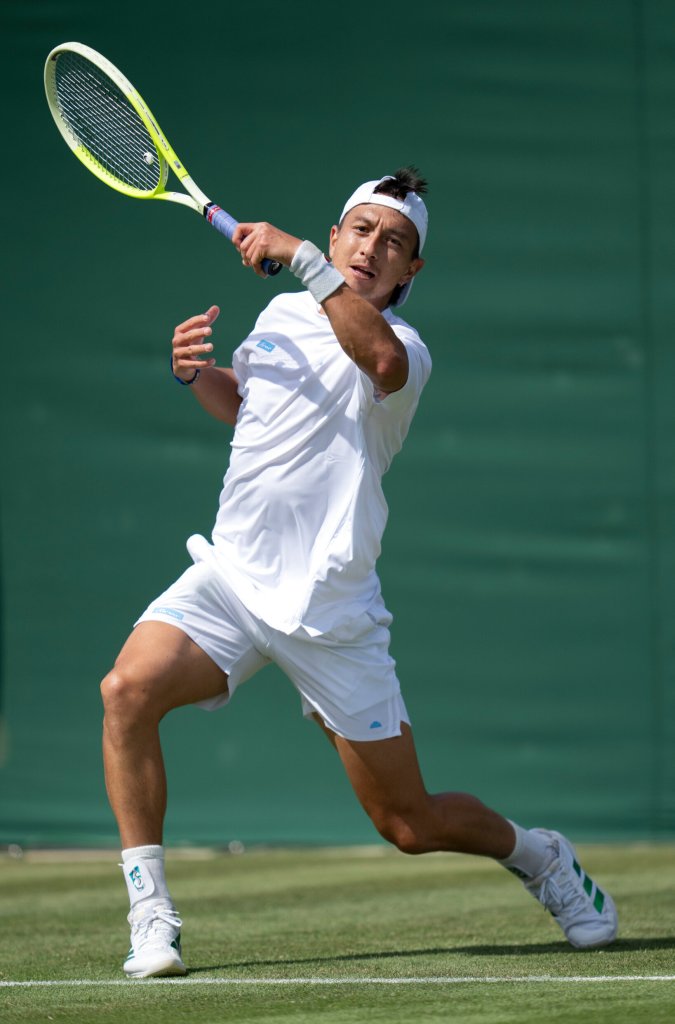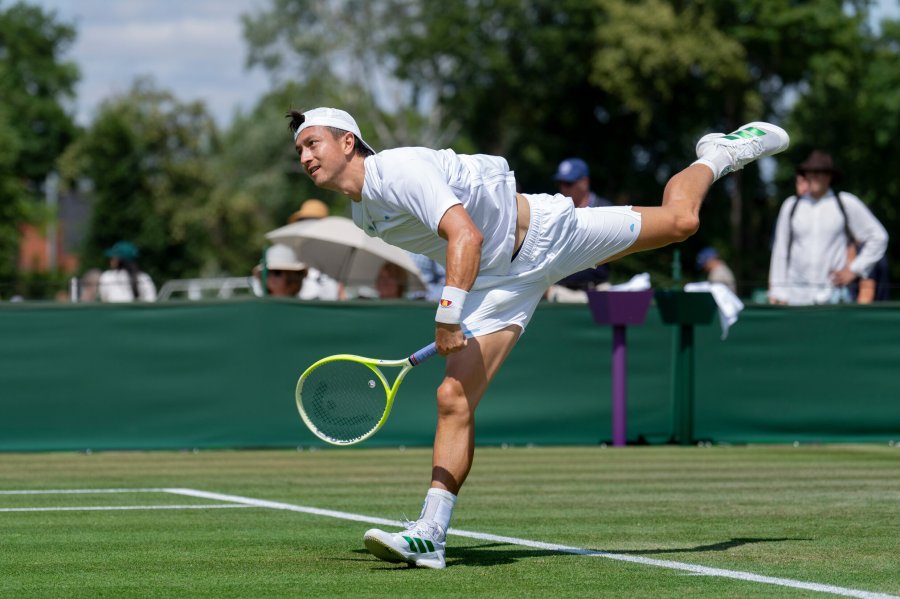British tennis pro Ryan Peniston is one of the UK’s leading singles players, having battled a rare cancer to reach a career high
At just a year old, British tennis pro Ryan Peniston was diagnosed with rhabdomyosarcoma, a rare soft tissue cancer. After 18 months of treatment, his recovery slowed his growth but didn’t stop him from becoming one of the UK’s leading singles players, reaching a career-high world ranking of 123.
Now 29, Peniston’s back in form after injury, winning the M25 Tbilisi title in Georgia by defeating Martin Damm 6-2, 3-6, 6-1, and reaching the semi-finals at the ATP Challenger in the same city. This autumn, alongside pushing his game forward on the ATP Tour, Peniston is supporting Young Lives vs Cancer’s Tennis-a-thon challenge. Men’s Fitness caught up with him on the road to discover more about ‘what goes on, on tour…’
Men’s Fitness: How’s the summer been for you on tour?
Ryan Peniston: It’s gone pretty well. Last year I had a serious injury, so I’ve been working my way back. I’m now at a ranking I’m happy with, hopefully close to getting into Grand Slam qualifying again. The grass court season was a lot of fun.
MF: What does a typical training week look like for you?
RP: It varies depending on whether I’m competing or not. In a non-tournament week, I’ll do two to four hours of tennis a day, plus one to two hours of fitness. That can mean conditioning, lifting, or flexibility work. I’ll also have about an hour of physio every day to keep my body in shape and prevent injuries.

MF: Do you build in rest days?
RP: Yes, usually one a week. I like Sundays – partly because I can have a roast! My coach and I also manage training loads so we don’t spike intensity, alternating heavier and lighter days.
MF: What’s the difference between a heavy and light day?
RP: It’s about time and intensity combined. A light day will still be hard work, but shorter – maybe 90 minutes of tennis and an hour of fitness, instead of a three-hour session. We also do lots of plyometric work for explosive changes of direction, plus rotation and mobility exercises. We’re not chasing max lifts – it’s about being quick, powerful, and staying mobile.
MF: Any sessions you dread?
RP: Conditioning. We have a machine at the National Tennis Centre called the VersaClimber – it’s the stuff of nightmares! It works all the muscles, all the time, all at once! I get major anxiety before using it, but feel great afterwards.
MF: Tennis is as much a mental game as a physical one. How do you work on that side?
RP: Absolutely. I’ve worked with a mental coach for about three years. Sometimes we talk about on-court situations – handling nerves, big crowds, high-pressure moments. Other times it’s off-court stuff, because life outside tennis can affect performance too.
MF: What’s life like as a tour player?
RP: There are glamorous weeks, but a lot of it is airports, long flights, and time away from family and friends. That can be tough. Having friends on tour helps – we’re on the road around 30 weeks a year, so it’s important to be social.
MF: Speaking of friends on the tennis tour, who are the other Brits to watch?
RP: We’ve got a strong group training at the National Tennis Centre. Jack Draper’s already top five, but coming through are Jack Pennington Jones, Arthur Fery, and George Loffhagen – who just won a tournament.
You do tend to get waves of new generation players all coming through at one – but a good tennis environment pushes everyone forward too, we’re lucky the National Tennis Centre that we have that too.

MF: Tell us about your work with Young Lives vs Cancer.
RP: I had rhabdomyosarcoma (a type of soft tissue cancer) when I was one, and charities played a huge role in helping me recover. Young Lives vs Cancer supports children and young people with cancer and their families. Any way I can give back, I will.
MF: And what exactly is a Tennis-a-thon?
RP: Ha! It’s a fundraising challenge – last year was a big success. People can organise anything from a 12-hour marathon to a casual hit with friends. This September is Childhood Cancer Awareness Month, so it’s the perfect time to get involved and support the cause.
• Young Lives vs Cancer’s Tennis-a-thon runs until the end of September – which is Childhood Cancer Awareness month visit Tennis-a-thon for Young Lives vs Cancer
PIC CREDIT: WT Creatives Media
RYAN’S 3 GO-TO TENNIS FITNESS DRILLS
Build power, speed and mobility like a pro.
Lateral Plyometric Bounds
Why: Tennis is all about explosive side-to-side movement.
How: From a semi-squat, bound laterally to your left, land softly, and rebound to the right. Keep chest up and core engaged.
Sets/Reps: 3 x 8 bounds each side.
Medicine Ball Rotational Slams
Why: Improves racket-head speed and rotational power.
How: Stand side-on to a wall, holding a medicine ball at chest height. Rotate your torso explosively and slam the ball into the wall. Catch and repeat.
Sets/Reps: 3 x 10 each side.
Single-Leg Romanian Deadlifts
Why: Strengthens hamstrings, glutes, and balance for quick directional changes.
How: Holding a dumbbell in one hand, hinge forward on one leg, keeping back straight, until torso is parallel to floor. Return to standing.
Sets/Reps: 3 x 8 each leg.








